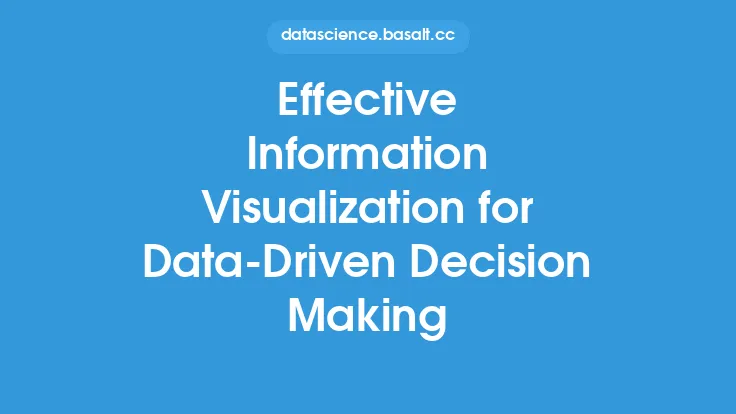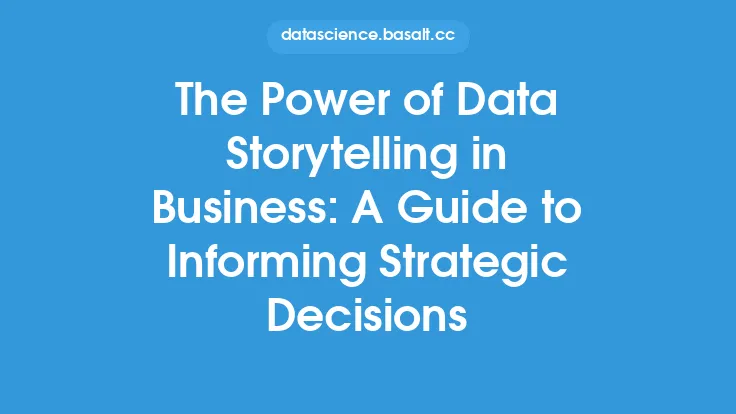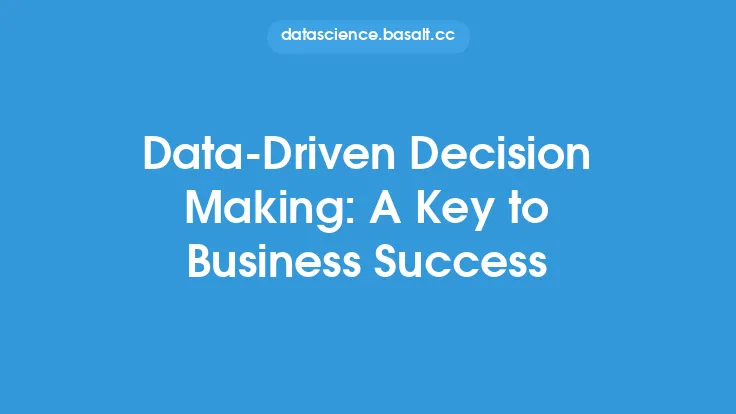Geospatial data visualization is a powerful tool for decision-making, allowing users to communicate complex information in a clear and concise manner. By leveraging the unique characteristics of geospatial data, which includes information tied to specific locations on the Earth's surface, users can create interactive and dynamic visualizations that reveal patterns, trends, and relationships that might be difficult to discern from raw data alone. Effective geospatial data visualization is about more than just presenting data; it's about telling a story that informs, engages, and motivates the audience to take action.
Introduction to Geospatial Data Visualization
Geospatial data visualization combines geographic information systems (GIS) with data visualization techniques to create maps, 3D scenes, and other visual representations of geospatial data. This field has seen significant growth with the advancement of technology, including improvements in data collection methods, computing power, and software capabilities. Today, geospatial data visualization is used in a wide range of applications, from urban planning and environmental monitoring to emergency response and business intelligence. The key to successful geospatial data visualization is understanding the audience, the story that needs to be told, and the most effective ways to communicate the message.
Principles of Effective Geospatial Data Visualization
Effective geospatial data visualization is grounded in several key principles. First, it must be clear and concise, avoiding unnecessary complexity and ensuring that the message is quickly and easily understood. Second, it should be interactive, allowing users to explore the data in more detail and from different perspectives. Third, it must be visually appealing, using color, texture, and other visual elements to engage the audience and draw attention to key findings. Finally, it should be based on accurate and reliable data, ensuring that the insights and conclusions drawn from the visualization are trustworthy.
Tools and Technologies for Geospatial Data Visualization
A variety of tools and technologies are available for geospatial data visualization, ranging from desktop GIS software like ArcGIS and QGIS to web-based platforms like Leaflet and OpenLayers. These tools offer a range of functionalities, from basic mapping and data visualization to advanced spatial analysis and 3D modeling. In recent years, there has been a shift towards web-based and cloud-based solutions, which offer greater flexibility, scalability, and collaboration capabilities. Additionally, the development of libraries and frameworks such as D3.js and Matplotlib has made it easier for developers to create custom geospatial data visualizations.
Best Practices for Geospatial Data Visualization
Several best practices can help ensure that geospatial data visualizations are effective and informative. First, it's essential to understand the data and the story that needs to be told, including the key findings, trends, and insights. Second, the visualization should be designed with the audience in mind, taking into account their level of familiarity with geospatial data and their specific needs and interests. Third, the visualization should be kept simple and intuitive, avoiding unnecessary complexity and ensuring that the message is quickly and easily understood. Finally, the visualization should be regularly updated and refined, reflecting new data and insights and ensuring that the story remains relevant and engaging.
Applications of Geospatial Data Visualization
Geospatial data visualization has a wide range of applications, from environmental monitoring and natural resource management to urban planning and emergency response. In the field of environmental monitoring, geospatial data visualization can be used to track changes in land use and land cover, monitor water and air quality, and identify areas of high conservation value. In urban planning, geospatial data visualization can be used to analyze population growth and demographic trends, identify areas of high crime and poverty, and optimize the location of public services and infrastructure. In emergency response, geospatial data visualization can be used to quickly and easily communicate critical information, such as the location of emergency services, evacuation routes, and areas of high risk.
Challenges and Limitations of Geospatial Data Visualization
Despite the many benefits of geospatial data visualization, there are also several challenges and limitations that need to be considered. First, geospatial data can be complex and difficult to work with, requiring specialized skills and knowledge. Second, the quality and accuracy of geospatial data can vary widely, depending on the source and method of collection. Third, geospatial data visualization can be time-consuming and resource-intensive, requiring significant investments of time and money. Finally, there can be privacy and security concerns associated with geospatial data, particularly when it involves sensitive or personal information.
Future Directions for Geospatial Data Visualization
The field of geospatial data visualization is constantly evolving, with new technologies, tools, and techniques emerging all the time. In the future, we can expect to see greater use of artificial intelligence and machine learning, which will enable more automated and sophisticated analysis of geospatial data. We can also expect to see greater use of virtual and augmented reality, which will enable more immersive and interactive geospatial data visualizations. Additionally, there will be a growing need for geospatial data visualization to be integrated with other fields, such as data science and business intelligence, to provide a more comprehensive and nuanced understanding of complex phenomena.
Conclusion
Geospatial data visualization is a powerful tool for decision-making, allowing users to communicate complex information in a clear and concise manner. By leveraging the unique characteristics of geospatial data and following best practices for effective storytelling, users can create interactive and dynamic visualizations that reveal patterns, trends, and relationships that might be difficult to discern from raw data alone. As the field continues to evolve, we can expect to see new technologies, tools, and techniques emerge, enabling even more sophisticated and effective geospatial data visualizations. Whether you're a seasoned professional or just starting out, geospatial data visualization has the potential to revolutionize the way you work with data and make decisions.





